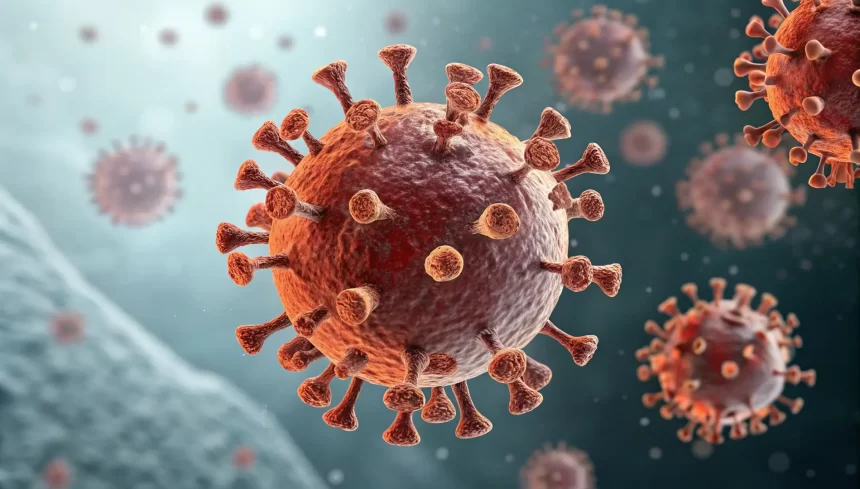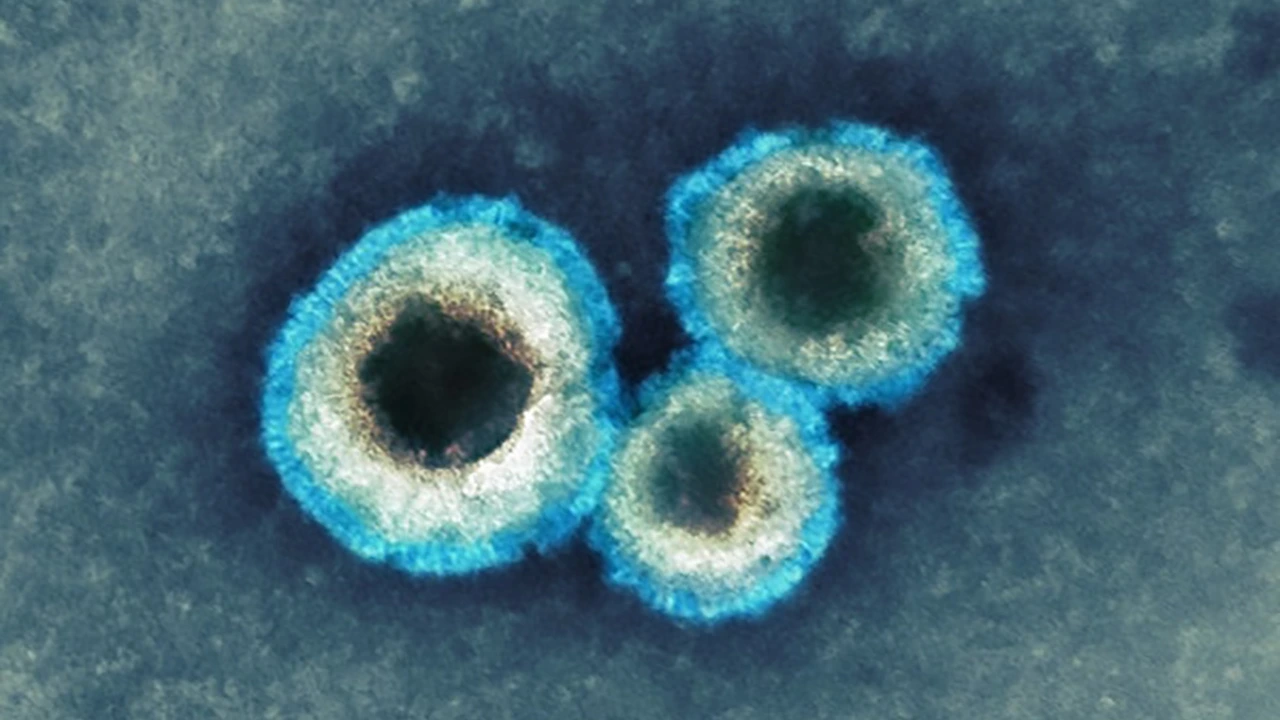Human Metapneumovirus (HMPV) is a respiratory virus causing mild to severe symptoms, like pneumonia. It spreads through droplets, so hygiene is key. Treatment costs can add up, especially for vulnerable groups. Health insurance helps cover expenses, ensuring care without financial burden.
- What is Human Metapneumovirus (HMPV)?
- How is human metapneumovirus (HMPV) spread?
- Symptoms
- Who is most susceptible to human metapneumovirus (HMPV)?
- Human metapneumovirus (HMPV) vs. Other Respiratory Viruses
- How is human metapneumovirus (HMPV) diagnosed?
- Is human metapneumovirus (HMPV) curable?
- How to prevent HMPV infection?
- What is the public health impact of HMPV?
- Conclusion
What is Human Metapneumovirus (HMPV)?
Human Metapneumovirus (HMPV) might not be a household name, but it’s a respiratory virus you’ve likely encountered without knowing it. First discovered in 2001, HMPV is a member of the Paramyxoviridae family, the same family as RSV (Respiratory Syncytial Virus). It primarily causes respiratory illnesses ranging from mild cold-like symptoms to more severe conditions like bronchiolitis and pneumonia. Though most people recover without complications, certain groups—like infants, older adults, and those with weakened immune systems—are at greater risk of severe illness.
Margaret Harris, a spokeswoman for the World Health Organization in Geneva, said HMPV has received a lot of attention because of its unfamiliar name, but it was discovered in 2001. HMPV is a common virus that circulates in the winter and spring and has a very, very low mortality rate.
How is human metapneumovirus (HMPV) spread?
HMPV is usually spread through respiratory droplets when an infected person coughs, sneezes, or talks. You can also catch it by touching contaminated surfaces and then touching your face. If you touch surfaces like doorknobs, shared phones and keyboards, and other common objects, try to disinfect your hands as soon as possible—all are hot spots for viral germs. Frequent hand washing and disinfecting surfaces can significantly reduce your risk of infection.
Symptoms
Symptoms of HMPV can vary from person to person. These symptoms include:
Mild symptoms:
- Cough
- Runny nose
- Sore throat
- Low-grade fever
- Fatigue
Severe symptoms:
- Wheezing
- Trouble breathing
- Bronchiolitis (inflammation of the small airways in the lungs)
- Pneumonia
If you or a loved one has trouble breathing or persistent symptoms, be sure to see a doctor.
Who is most susceptible to human metapneumovirus (HMPV)?
The virus can affect anyone. However, some groups are more vulnerable to severe complications:
Infants and young children: Their immune systems are still developing.
The elderly: Especially those over 65 or with underlying conditions such as COPD or heart disease.
People with immunodeficiencies: Conditions such as cancer or organ transplants increase susceptibility.
For these high-risk groups, even a mild infection can quickly worsen, making prevention and early care essential.
Human metapneumovirus (HMPV) vs. Other Respiratory Viruses
HMPV is one of several respiratory viruses, alongside RSV, influenza, and COVID-19. Here’s how these viruses compare:
| Feature | HMPV | RSV | Influenza | COVID-19 |
|---|---|---|---|---|
| Discovery | 2001 | 1956 | 1933 | 2019 |
| Symptoms | Cold-like to severe respiratory | Similar to HMPV, more severe in kids | Sudden fever, chills, muscle aches | Fever, cough, loss of taste/smell |
| Transmission | Droplets, surfaces | Droplets, surfaces | Droplets, surfaces | Droplets, aerosols, surfaces |
| High-Risk Groups | Infants, elderly, immunocompromised | Same as HMPV | Elderly, pregnant women, those with chronic illnesses | Same as HMPV and more |
| Vaccine Availability | No | Yes (for high-risk groups) | Yes | Yes |
While all these viruses share overlapping symptoms and modes of transmission, vaccination and specific treatments can make a significant difference for RSV, flu, and COVID-19. For HMPV, prevention remains your best bet.
How is human metapneumovirus (HMPV) diagnosed?
Diagnosis of HMPV usually begins with a health care provider’s evaluation of your symptoms and medical history. Diagnostic tests may include the following:
PCR test: PCR tests are very accurate, making them the most reliable way to diagnose HMPV. They work by detecting the genetic material (RNA) of the virus in a sample, typically from the nose or throat.
Rapid antigen test: This test looks for viral proteins in the sample. It is less sensitive than the PCR test. It is often used when quick results are needed, but negative results may need to be confirmed with a PCR test.
Viral cultures: Not commonly used, but can be effective in specialized cases, especially when other tests are not available or when the virus needs to be identified in more detail.
Is human metapneumovirus (HMPV) curable?
Unfortunately, there is no specific antiviral medication for HMPV. Prevention is the first step, but if you do get the disease, doctors say the best ways to cope are:
- Rest and hydration
- Over-the-counter fever-reducing medications such as acetaminophen or ibuprofen
- In severe cases, hospitalization for oxygen therapy or mechanical ventilation may be necessary.
If you experience any symptoms of this virus, it’s important to consult a doctor. For infants and high-risk adults, close monitoring is crucial to prevent the condition from worsening.
How to prevent HMPV infection?
Good hygiene is your strongest line of defense against HMPV.
- Wash your hands frequently with soap and water for at least 20 seconds.
- Avoid touching your face, especially your eyes, nose, and mouth.
- Disinfect commonly touched surfaces daily.
- Stay away from people with cold symptoms.
And if you are sick? Try to stay home and protect others by wearing a mask.
What is the public health impact of HMPV?
Studies show that it is a leading cause of hospitalization for respiratory infections in young children. In fact, a 2020 study published in The Lancet Respiratory Medicine found that HMPV accounts for about 5 to 10 percent of respiratory infections worldwide each year.
Conclusion
Human metapneumovirus may not be as well-known as the flu or COVID-19, but it is a serious contender in the world of respiratory viruses. There is no vaccine or specific treatment for this virus, and prevention is the best way to prevent it. Try to wash your hands and disinfect surfaces several times throughout the day. Wearing a mask, especially in public places, can go a long way in preventing the spread of this disease. You can protect yourself and your loved ones from this common virus by staying informed and active.













